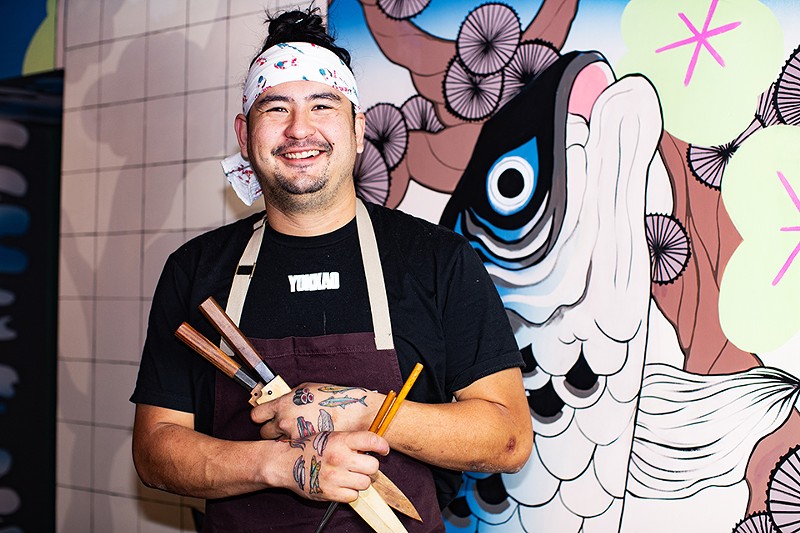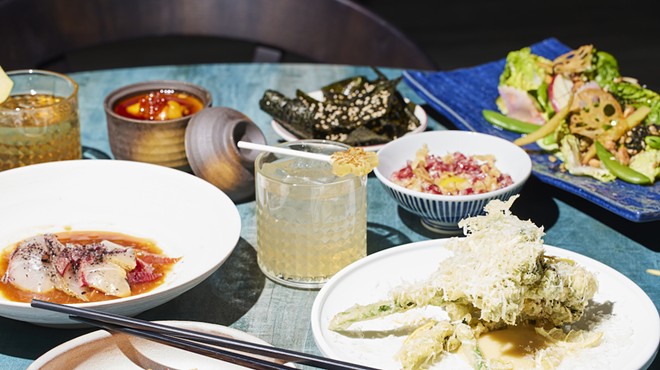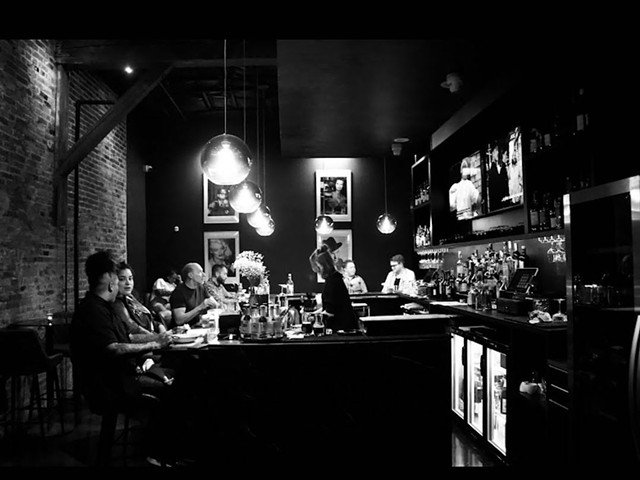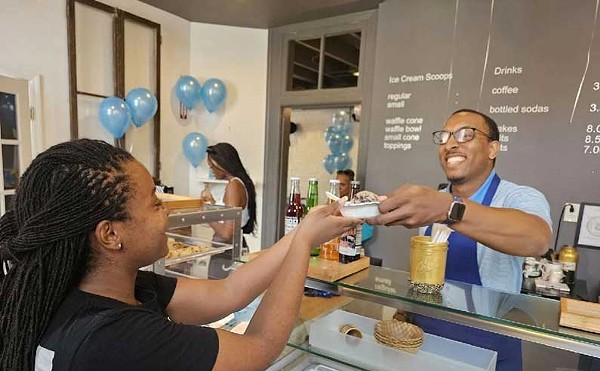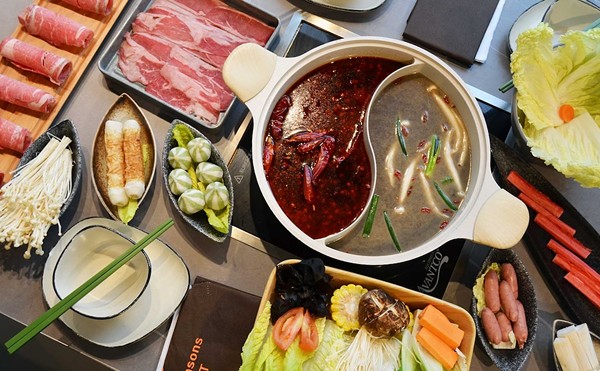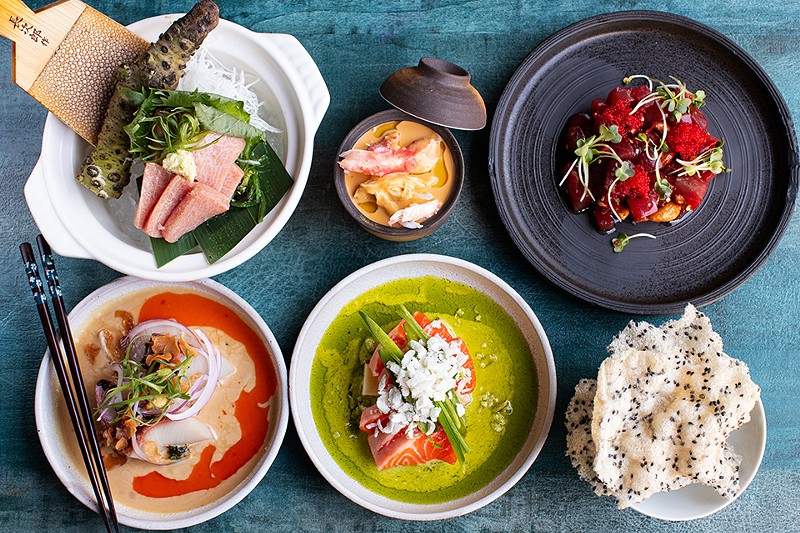
Five years ago, Nick Bognar was a young, ambitious chef who was starting to question himself. Though he'd recently returned to St. Louis after working at acclaimed restaurants in Austin and Cincinnati with big plans for invigorating his family's 20-year-old restaurant, Nippon Tei, he was beginning to wonder if he had made a mistake. His mother and father — in theory on board with, and even drivers of, some changes — were growing impatient. So was the staff. For the first time in its history, the restaurant had lost money for the month. Employees were quitting. Customers were complaining incessantly. He was regularly arguing with his parents. It seemed as if his plans to turn the longtime Japanese restaurant into a bastion of high-end cuisine were on the road to failure.
Fast forward to the present day, and it's difficult to imagine Bognar as anything but a visionary success story. National accolades, a James Beard nod and his wildly popular restaurant Indo all point to this, but perhaps nothing makes the case stronger than his latest effort, the absolutely dazzling Sado (5201 Shaw Avenue, 314-390-2883). A culmination of Bognar and his parents' years in the industry, his passion for fish and the high-end Japanese cuisine techniques he's mastered, Sado stands not simply as the best restaurant in the area for sushi but as a restaurant vital to telling the story of dining in St. Louis.
Though Sado is dramatically different from Nippon Tei, you cannot talk about it without paying tribute to its predecessor — and Bognar's parents Ann and Mike, who laid the foundation for all Bognar and Sado have become. Bognar grew up in his parents' now-shuttered west county restaurant, rolling egg rolls and crab rangoon and helping out in the kitchen as soon as he was old enough to do so. The business got into his blood, and he began taking culinary classes as a junior in high school, which led to culinary school at St. Louis Community College-Forest Park and cooking jobs at Wasabi and his parents' restaurants Nippon Tei and Tei Too.
Wanting space to develop his skills independently, Bognar left town for Austin, Texas, and the acclaimed Uchiko restaurant, which opened his eyes to a new world of high-end sushi and Japanese cuisine. After a year at Uchiko, Bognar helped open a sushi restaurant in Cincinnati, and was given the chance to strike out with his own concept. However, something inside him whispered that, when he was ready to open a place of his own, it should be in St. Louis. This, coupled with his mom's desire to shake things up at Nippon Tei, made a return home the only option that felt right.
Nippon Tei's transformation from a Japanese mainstay into a bastion of high-end cuisine and world-class fish under Bognar's guidance may have taken months of struggle at the beginning, but finances turned around overnight thanks to a rave review from Post-Dispatch food critic Ian Froeb. It also set the stage for Sado, which opened in the former Giovanni's on the Hill in March. Originally billed as part move, part new concept, Sado stands as more than just a rebrand and relocation of Nippon Tei (which closed earlier this year); it is the realization of Bognar's vision for elegant Japanese cuisine in St. Louis. You understand this the moment you walk through the front doors and are transported into a dimly lit realm that feels positively ceremonial. In part, this is due to the moody colors and vibe, with grays, teals, marble and modern artwork that sets an aesthetic tone. An ethereal jellyfish mural takes up the entire wall behind the sushi bar, and pendant chandeliers cast a soft glow over the front and main dining rooms.
However, it's Sado's impeccable food that truly gives you the back-of-the-neck tingling inspired by a sacred space. Perhaps no dish is more evocative of this — and everything that Bognar has wanted to achieve since returning to town — than the bluefin akami, which is less a simple piece of fish than it is a meditation on what sashimi should be. Deep garnet and glistening like a raspberry popsicle, the tuna is dry-aged (as are all of Sado's fish) for roughly one week so it becomes denser and fattier and develops a more luxurious mouthfeel. It's like marrying the most beautiful fruit of the sea with a gorgeous rare filet mignon — a specimen of absolute perfection.
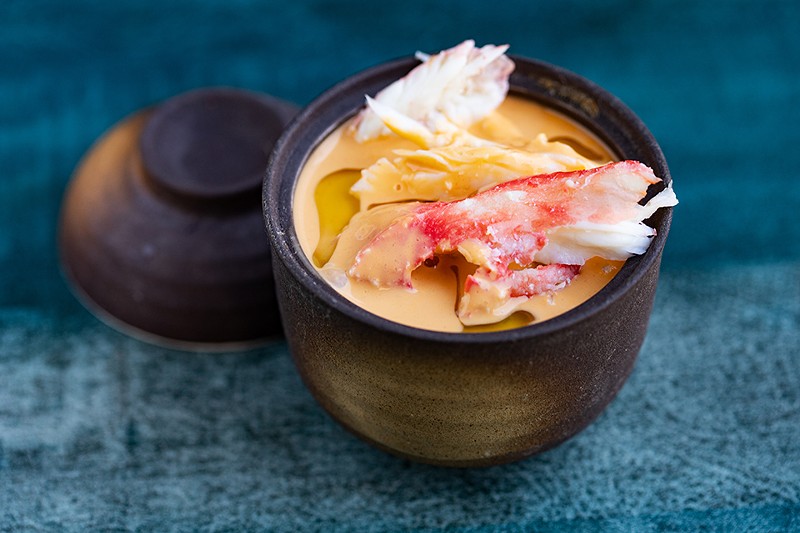
But it is not just raw fish where Bognar and Sado excel. Hamachi belly, kissed with deep smoke from a Japanese charcoal grill, is so buttery, it melts into its sticky rice canvas. Scallops, also cooked over charcoal, are enriched with gently bitter smoke, flavored with just a hint of bulgogi-inflected marinade and wrapped into crisp lettuce for a wonderful handheld dish.
Sado's Branzino is a masterclass in texture thanks to the juxtaposition between its succulent flesh and crisp skin. Mouth-puckering capers and crispy prosciutto give the dish an Italian inflection that nods to the space's former incarnation. Similarly, the broccolini tempura winks at the surrounding neighborhood; it's a mindblowing umami bomb of aioli and aged Parmesan funkier than a James Brown-Parliament shared bill. As delicious as the broccolini is, the acorn squash is the tempura showstopper; its light-as-air coating yields to the creamy squash — alone it's delicious, but when paired with the accompanying miso caramel, it's one of the best things you will eat all year.
It's also an embarrassment of riches. Makimono rolls, an approachable callback to Nippon Tei, are flawlessly executed and push diners beyond what is traditionally expected of the form in the heart of the Midwest. Wagyu, seared over a hot rock, is beef distilled in its purest form. However, the restaurant's most haunting offering — a distinction difficult to achieve when everything is magnificent — is the chawanmushi, a custard-like egg dish that falls somewhere between crème brulée and a French omelet in texture while also distilling the glories of shellfish thanks to the generous portion of sweet, buttery crab, lobster and shrimp that adorn this egg concoction. This is a contender for the best bite I've eaten all year.
Five years ago, the chawanmushi was nothing more than a glimmer in Bognar's eye. That he was able to bring such magnificence to fruition is the result of trust — trust in him on the part of his parents and staff. Trust that Nippon Tei diners extended to him to take a restaurant they loved and reconfigure it into something exciting and substantially different. And, most importantly, trust in himself — no matter how difficult the road or how much he doubted his actions — and his product. Not only did it give him the strength he needed to persevere; it gave us a world-class restaurant that will be setting the tone for dining in St. Louis for years to come.
Open Tues.-Thurs. 5-9 p.m.; Fri.-Sat. 5-10 p.m.; Sun. 5-9 p.m. (Closed Mon.)

